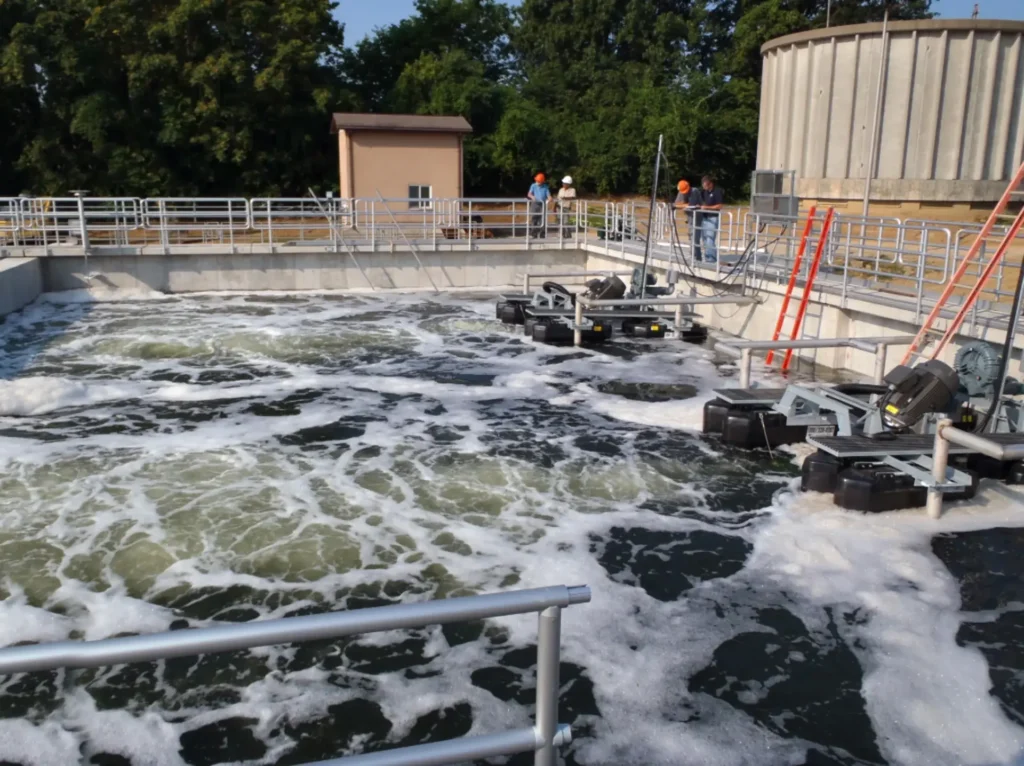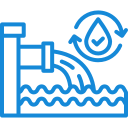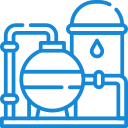Sequence Batch Reactor (SBR)
- Home
- Sequence Batch Reactor (SBR)
Type Of Services
- Bio Gas
- Demineralization Plant
- Commercial RO Plant
- Industrial RO Plant
- RO Desalination Solutions
- Effluent Treatment Plant (ETP)
- Membrane Bio Reactor (MBR)
- Membrane Aerated Biofilm Reactor (MABR)
- Moving Bed Bio Reactor (MBBR)
- Organic waste composter (OWC)
- Commercial RO Plant
- Sequence Batch Reactor (SBR)
- Sewage Treatment Plant (STP)
- Softener Plant
- Ultra Filtration
- Zero Liquid Discharge Treatment (ZLD)
- Solar Plant
Sequence Batch Reactor (SBR)
The sequencing batch reactor (SBR) is a fill-and draw activated sludge system for wastewater treatment. In this system, wastewater is added to a single “batch” reactor, treated to remove undesirable components, and then discharged. Equalization, aeration, and clarification can all be achieved using a single batch reactor. To optimize the performance of the system, two or more batch reactors are used in a predetermined sequence of operations. SBR systems have been successfully used to treat both municipal and industrial wastewater. They are uniquely suited for wastewater treatment applications characterized by low or intermittent flow conditions.

How Does a Sequencing Batch Reactor (SBR) Work?
The SBR process follows a cyclic operation, typically divided into five phases:
- Fill: Wastewater enters the reactor tank. The inflow can be continuous or intermittent, depending on the system design.
- React (Aeration): Air is supplied to facilitate biological treatment, allowing bacteria to break down organic pollutants and nutrients like nitrogen and phosphorus.
- Settle: Aeration stops, and the biomass (activated sludge) settles at the bottom, separating treated water from solids.
- Decant: The clear, treated water from the top layer is discharged for reuse or further treatment.
- Idle: This is a buffer phase where excess sludge can be removed before the next cycle starts.
Each cycle lasts 4 to 6 hours, making SBR a flexible and efficient treatment method.
Advantages:
- 1.Equalization, primary clarification (in most cases), biological treatment, and secondary clarification can be achieved in a single reactor vessel.
- 2.Operating flexibility and control.
- 3.Minimal footprint.
- 4.Potential capital cost savings by eliminating clarifiers and other equipment.
Applications
Industries We Serve

Municipal Wastewater Treatment

Industrial Wastewater Treatment

Agricultural Wastewater Treatment

Hotel & Hospitality Industry

Oil & Gas Industry

Residential Communities & Housing Societies

Hospitals & Healthcare Facilities


